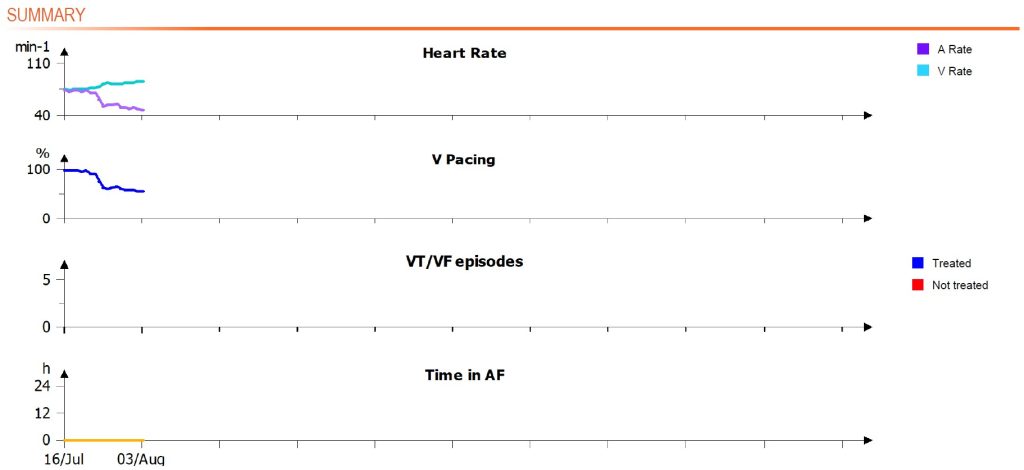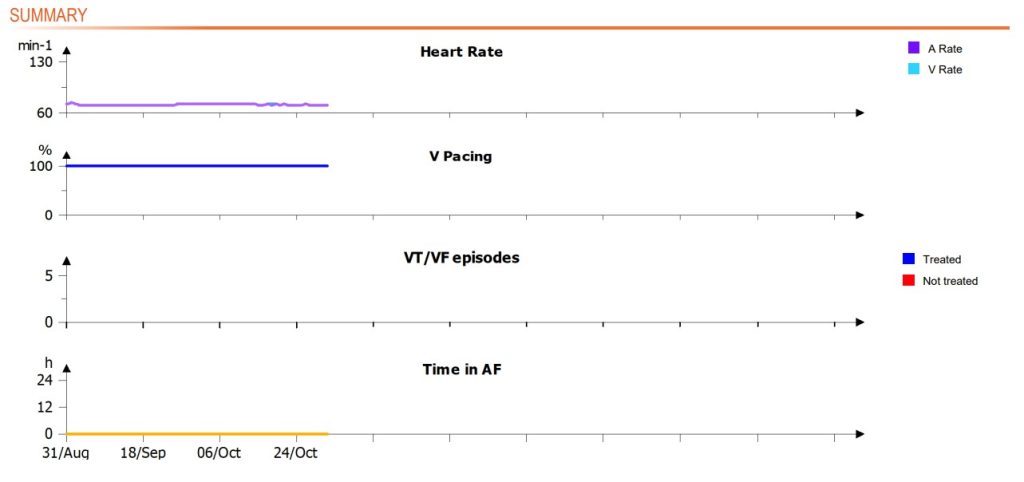Drop in percentage CRT (3)
Case Summary
0 of 1 Questions completed
Questions:
Information
You have already completed the case before. Hence you can not start it again.
Case is loading…
You must sign in or sign up to start the case.
You must first complete the following:
Results
Results
Time has elapsed
Catégories
- Pas classé 0%
-
Drop in %CRT is most often due to atrial arrhythmia but can also be due to ventricular arrythmia. CRT patients are more prone to develop ventricular arrythmia because of underlying left ventricular dysfunction with often presence of myocardial fibrosis. Analysis of the Real Time EGM reveals a slow (around 100 bpm) ventricular tachycardia which self-terminates and re-initiates. No episode was registered because the VT was slower than the slower VT zone. Further analysis of the transmission helps to establish the diagnosis and the onset of the VT such as the atrial and ventricular rate curves.
The V rate and A rate curves start to diverge since two weeks before the transmission. This means that the incessant VT exists since approximately two weeks. In direct relation with ventricular acceleration, we can also see progressive decline of percentage CRT. The patient was contacted and indeed complained of increased tiredness since this period. He was admitted for VT ablation which was performed succesfully the following week.
The next transmission three months later show 100% CRT since after the VT ablation in august.
The EGM also has become normal, free of ventricular arrhythmia.
- 1
- Current
- Review / Skip
- Answered
- Exact
- Inexact






